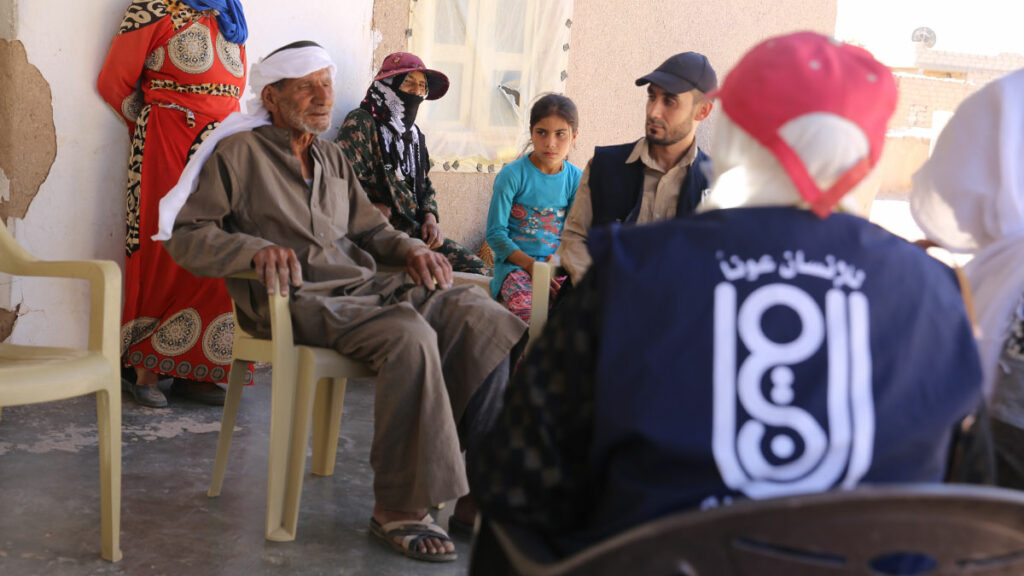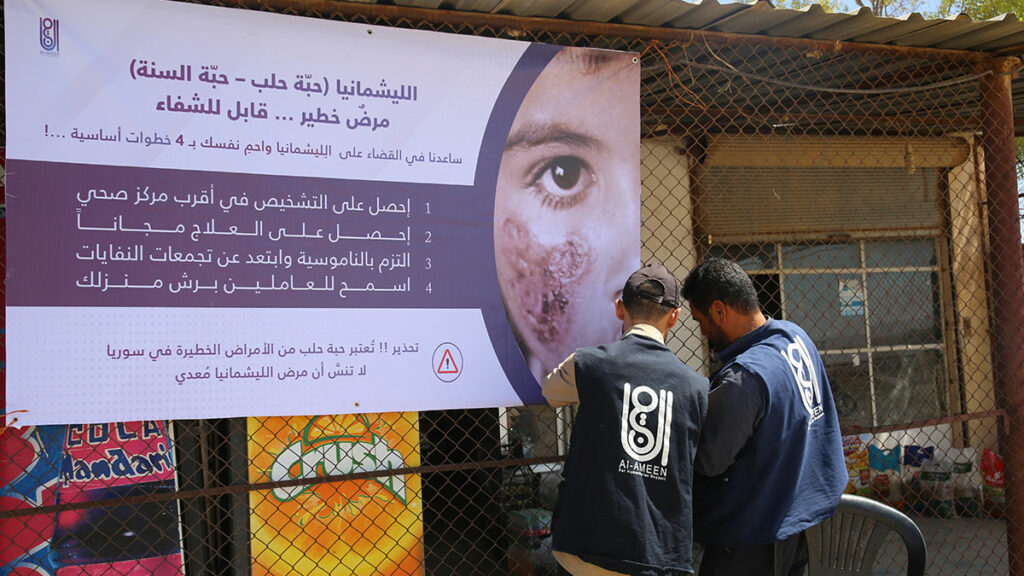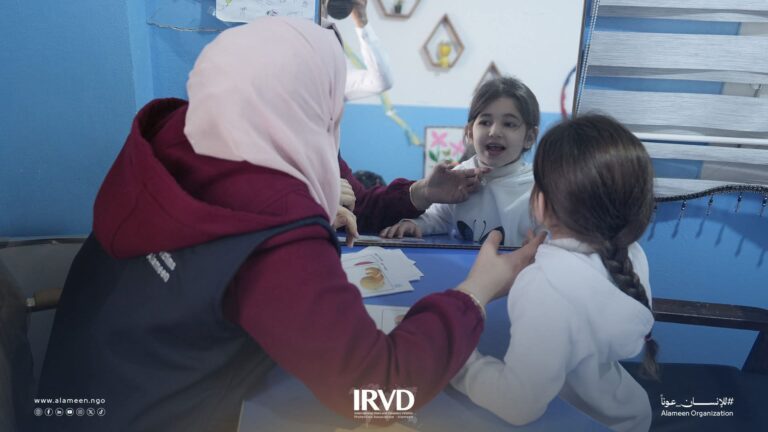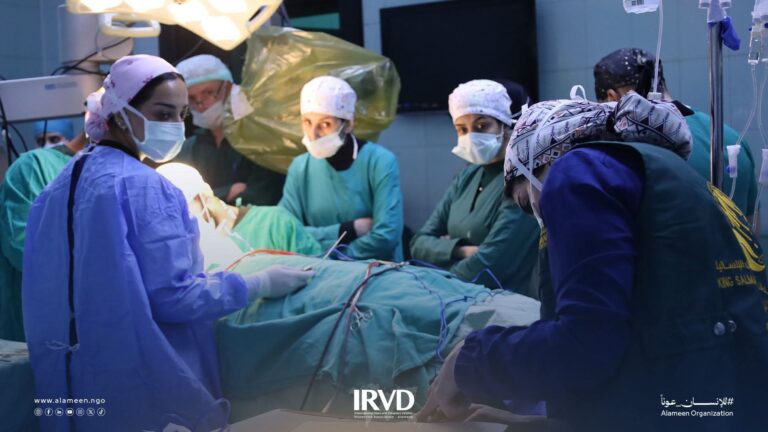leishmaniasis disaster
The suffering caused by Leishmaniasis continues in the Ras al-Ain area and
Tel Abyad in Northeast Syria. The number of infections has reached more than 45,000 cases, most children.
These areas suffer from poor medical intervention to cope with this disease and limited availability of treatment.
The primary health care centre, which Al-Ameen operates for Humanitarian Support, is one of the few respondents.
Al-Ameen for Humanitarian Support has committed itself to a significant part of the response to leishmaniasis in the area; it began responding through its health centre in Ras al-Ain, which had received more than 400 cases per day throughout the week since the beginning of the growing prevalence of Leishmaniasis in the area.
The Centre recorded the most significant percentage of total recoveries across the region during the response period in the centre. Owing to the continued doubling of numbers, a campaign to combat Leishmaniya in the areas of northeastern Syria had to be pursued.
launch of the campaign:
On the 18th of July 2022, Al-Ameen for Humanitarian Support launched an awareness campaign to combat Leishmaniya in the governorate of Al-Hasakah, in the northeast of Syria, specifically in the Ras al-Ain and Tel Abyad areas; the campaign will continue until the end of September this year.
It will target more than 185 points in the Ras al-Ain and Tel Abyad areas, which will be reached through 10 outreach teams working within the campaign by giving brochures, awareness posters and posters that will be distributed to residents and residents in homes and streets to reach the largest possible segment of the population, where more than 0000 beneficiaries are expected during the campaign period.
After that, mosquito nets will be distributed to people to prevent the risk of sand fly and transmission.
Coordination and launch mechanism:
After surveying, evaluating and conducting the necessary training for the health workers selected to work within the campaign, coordination was carried out with the relevant authorities and the Turkish authorities responsible in the region, as well as access to the regional authorities, actors and influencers. Al-Ameen aimed from the coordination process to work in the best possible way to reach the best results and to educate all residents in the area about the disease and ways to prevent and treat it.
The main risk factors
1- Socio-economic conditions
Poverty increases the risk of developing leishmaniasis. Poor housing and sanitary conditions in homes (e.g. inadequate waste management or open sewage) may increase sandflies’ breeding and resting sites and their potential for human access. Sand flies are attracted to crowded dwellings because they provide a good source of blood to feed. Also, human behaviour, such as sleeping outside or on the floor, may increase the risk of contracting this disease.
2- Malnutrition
Diets lacking in protein, energy, iron, vitamin A, and zinc increase the risk of infection progressing to advanced disease
3- Population mobility
The skin leishmaniasis epidemic and the visceral leishmaniasis epidemic are often linked to migration and the movement of unbidden people to areas with transmission cycles.
4- Environmental changes
The incidence of leishmaniasis may be affected by changes in urbanisation and human incursion into forest areas. Occupational exposure, as well as widespread deforestation, are also essential factors.
5- Climate change
Leishmaniasis is a climate-sensitive disease that affects its epidemiology in many ways. Changes in temperature, precipitation and humidity can severely affect vectors and host reservoirs by altering their distribution, survival, and numbers. Small fluctuations in temperature may significantly affect the development cycle of the parasite that causes leishmaniasis in sand flies, allowing the parasites to move to areas that were not endemic. Drought, famine and floods can lead to mass displacement and migration of people to places where leishmaniasis is transmitted, and malnutrition can undermine their immunity.






